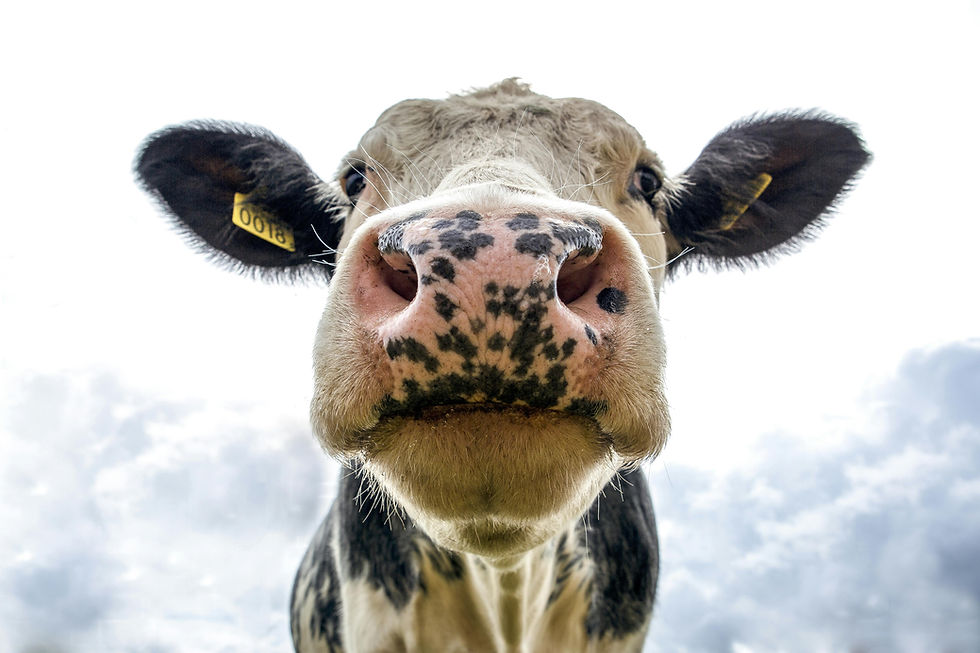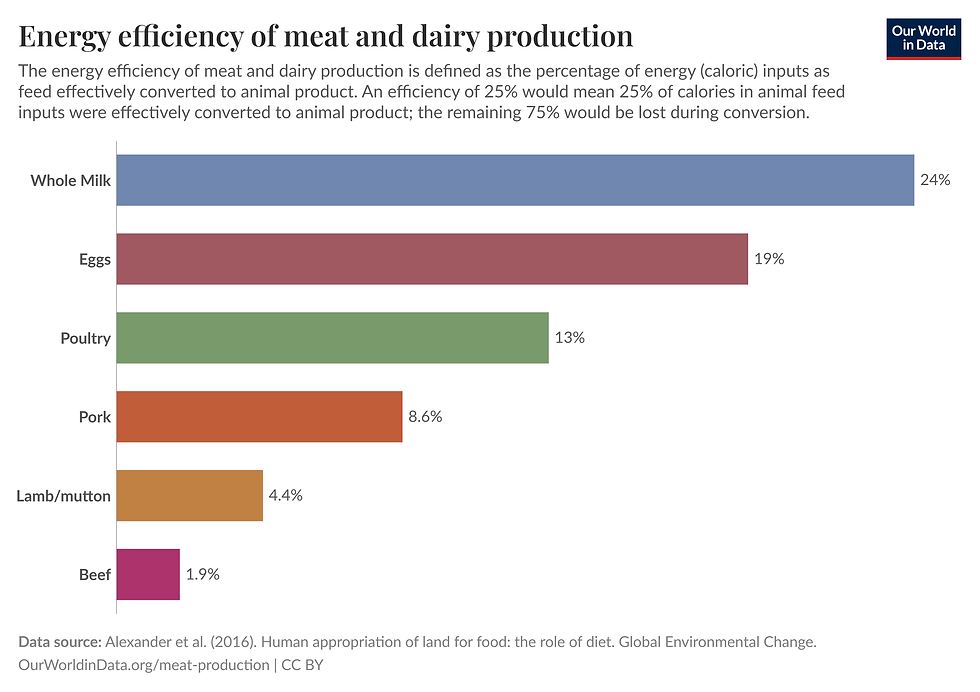It's a Calorie Conversion Problem, Baby!
- Peter Day
- Feb 12
- 2 min read
Updated: Feb 13

Many of you will be aware of meat and dairy’s various environmental and ethical issues. But there’s one set of statistics that seems to be largely overlooked, but essentially magnifies those very problems.
And that’s efficiency. What do we mean by efficiency? Well, a key measure is percentage of feed (calories) converted into the end product (meat and dairy). So how much of the calories eaten by the animal are available to us humans in our chicken, beef, pork, dairy etc.

So in the case of the least efficient, beef, we get about 1.9% of the calories we input into the animal in the product on the shelf. It’s not a great return on investment. How can this be?
Well, a lot is lost in digestion, then of course there’s walking around, the well-documented methane farts, standing, and even thinking. While they don’t expend as much energy on cerebral action as we do, cows’ brains consume about 10% of their energy intake, which given their contribution to science, arts and literature I think we can all agree is a bit of a waste (remain calm militants, it’s trying to be humour).
That’s calories, but are they at least solidly converting protein for our consumption?
Apparently, performance against that metric is not great either.

To be fair to cows, none of products cover themselves in glory. Most of the protein ingested by the animal is lost to us.
What does this mean? Well, in the case of cows, we need to set aside an enormous amount of land for pasture to get a pretty crumby return. What could that land be used for? Well, growing crops we could eat ourselves, or excitingly left to itself as space for public use and native species and wildlife to blossom.
Of course, the majority of beef produced worldwide is grain fed, most of which is perfectly edible by humans (e.g. corn, wheat, barley, oats, triticale, and sorghum). So with less meat production, we could grow less of this, but cut out the ‘middle animal’ and again consume it directly.
On a slightly more philosophical level, you have to wonder whether, given the appalling conversion rates, and the amount of land required, our current consumption volumes are really the intended way of things. Nature has evolved over eons, constantly adapting to various pressures to refine and produce a perfect balance. A practice so wasteful, on such a large scale, therefore seems to be an anomaly.
Please comment, follow us and share!



Comments